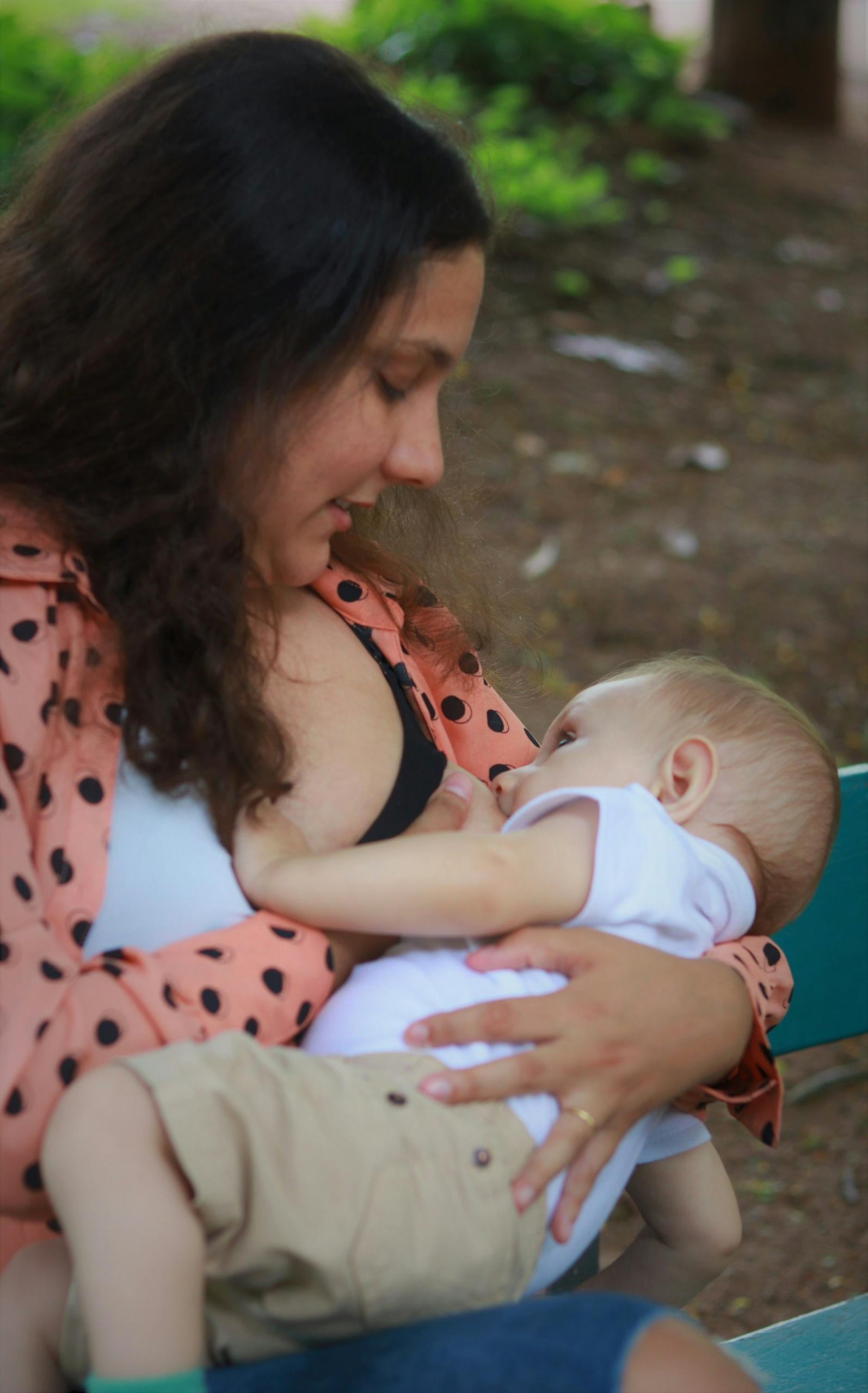Breastfeeding isn’t always the picture-perfect experience we hope for. Mastitis is one of those painful roadblocks that can catch even experienced moms off guard. Whether you’re a new mama or a seasoned pro, this guide will help you spot the mastitis symptoms early, treat it naturally, and prevent it from coming back. Let’s break it down in a way that actually helps.
What Is Mastitis, Really?
Mastitis is inflammation of the breast tissue, and sometimes it includes an infection. It usually shows up during breastfeeding when milk isn’t draining properly. That back-up creates pressure, swelling, and, sometimes, a breeding ground for bacteria. The result? Painful, red, hot breasts. Sometimes you’ll feel feverish and wiped out too.
There are two main types:
- Inflammatory (non-infectious): Caused by engorgement, oversupply, or milk stasis.
- Infectious: Happens when bacteria enter through a cracked nipple and cause an infection.
Either way, mastitis hurts. But the good news? You can often catch it early and manage it without antibiotics.
What Causes Mastitis?
- Cracked or sore nipples (often the entry point for bacteria)
- Milk stasis from skipped feeds or poor drainage
- Oversupply or over-pumping
- Tight clothing or bras that put pressure on ducts
- Sleeping on your stomach (squashing breast tissue)
- Infrequent nursing or weaning too quickly
- Poor latch or improper positioning
- Baby’s mouth hygiene (yes, it matters!)
See more risk factors and causes

Mastitis Symptoms You Shouldn’t Ignore
- A hard, sore lump in your breast
- Redness or swelling (often wedge-shaped)
- Warm or hot area on the breast
- Flu-like symptoms: chills, fatigue, body aches
- Fever over 38.5°C (101.3°F)
- Tenderness or pain during breastfeeding
- Thickened or clumpy milk, temporary dip in supply
- Enlarged lymph nodes in or near your armpit
- Itchiness or burning sensation
- Nipple discharge (may look pus-like)
Important: If mastitis symptoms last more than a few days or worsen, talk to your doctor. In rare cases, unresolved mastitis can develop into a breast abscess or mimic Inflammatory Breast Cancer (IBC). Always trust your instincts. Learn to spot IBC symptoms
How to Heal Quickly & Naturally
1. Continue Breastfeeding
Breastfeeding helps clear the infection and keeps milk flowing. Don’t stop unless your doctor advises otherwise.
2. Switch Up Positions
Try feeding while leaning over your baby (“dangle feeding”) so gravity helps drain the area. Vary baby’s position to fully empty different ducts.

3. Use Cold Compresses
Apply chilled cabbage leaves or soft ice packs wrapped in cloth to reduce inflammation between feeds. Save warm compresses for just before feeding or expressing to encourage let-down.
4. Gentle Breast Massage for Mastitis Treatment
Use light, sweeping strokes from the armpit toward the nipple. Avoid aggressive massage, which can worsen swelling or cause bruising.
5. Rest, Hydrate & Eat Well
Your immune system needs support. Rest as much as possible, drink lots of fluids, and eat wholesome, nutrient-rich foods.
Check expert tips for safe self-care

Natural Helpers That Can Support Healing
Internal Mastitis Remedies
- Garlic: Nature’s antibiotic. Swallow raw cloves or try this remedy: blend 3 garlic cloves with 4 oz carrot juice every two hours.
- Vitamin C: Supports immune function. Aim for small, consistent doses throughout the day.
- Lecithin (sunflower or soy): May prevent clogged ducts by thinning milk.
- Probiotics: Help balance the breast microbiome.

Topical & Herbal Mastitis Remedies
- Cabbage leaves Mastitis treatment: Placed directly on the infected area to draw out heat and reduce swelling.
- Comfrey & Calendula compresses: Boil leaves and flowers, apply warm 4x daily to ease soreness and promote healing.
- Raw potato poultice: Grate a raw potato, chill slightly, and apply directly to the sore area.
- Epsom salt soaks: Relax in a warm bath with 1.5 cups of Epsom salts to reduce inflammation and increase circulation. You can also soak just your breast in warm Epsom water if a full bath isn’t possible.
Bonus Tip: Coconut oil is soothing, moisturizing, and has antimicrobial properties. Rub a little around the nipple area between feeds.
What NOT to Do (Seriously, Skip These)
- Don’t aggressively massage a lump: It can make things worse.
- Don’t pump excessively to “empty” the breast: This can cause oversupply.
- Don’t rely only on hot compresses: For inflammation, cold is better.
- Don’t assume you need to stop breastfeeding: You usually don’t.
- Don’t ignore lingering mastitis symptoms: It could be an abscess or rare condition like IBC.
Read current clinical guidelines
When to Call a Doctor
Reach out if you:
- Have a fever that doesn’t go down after 24-48 hours
- Feel worse, not better, despite home care
- Have pus or bloody discharge from your nipple
- Have a lump that gets larger or extremely painful
- Experience dizziness, confusion, or chills
You may need antibiotics or abscess drainage — and that’s okay. Quick mastitis treatment means quicker healing.
How to Prevent Mastitis
1. Master the Latch
Bad latch = poor drainage + sore nipples = mastitis risk.
2. Feed Frequently
Avoid long gaps. Pump just enough if baby sleeps longer stretches.
3. Support the Flow
Use gentle massage, vary feeding positions, and avoid sleeping face-down.
4. Keep Nipples Clean
Clean gently after feeds. Watch for cracks or white spots (blebs).
5. Baby Mouth Hygiene
Wipe baby’s mouth clean before feeds, especially during teething or illness.
6. Wear Soft, Non-Constricting Bras
No underwire or compression-style bras.
7. Stay Hydrated & Nourished
Water, nutrient-rich food, and rest help prevent mastitis from the inside out.
8. Wean Slowly
Sudden weaning increases risk. Let your body adjust gradually.
9. Take Lecithin
This natural supplement helps reduce clogged ducts.
10. Know the Early Signs of Mastitis
Catch it early, act fast.
Final Takeaway
Your breasts are doing superhero work. Sometimes they need a little TLC. Listen to your body, respond early, and don’t be afraid to ask for help. Healing and preventing mastitis naturally is 100% doable—and you don’t have to do it alone.
Resources
- Find a breastfeeding support group near you.
- Milkology Breastfeeding Class – Affordable, video-based online course to help you master breastfeeding at your own pace.
References
- KellyMom – Common Issues for Nursing Parents
- Academy of Breastfeeding Medicine Clinical Protocols
- NHS – Causes and Prevention of Breast Issues
- American Cancer Society – Inflammatory Breast Cancer Info



